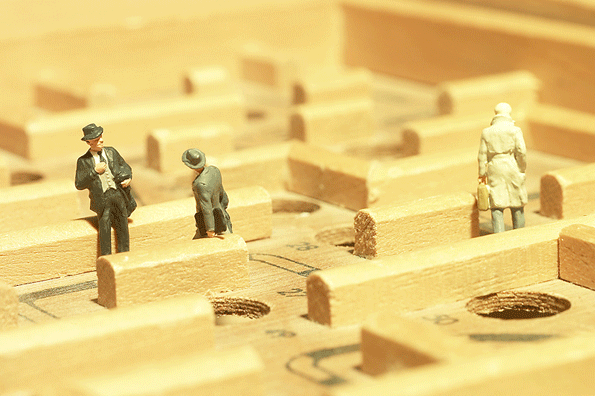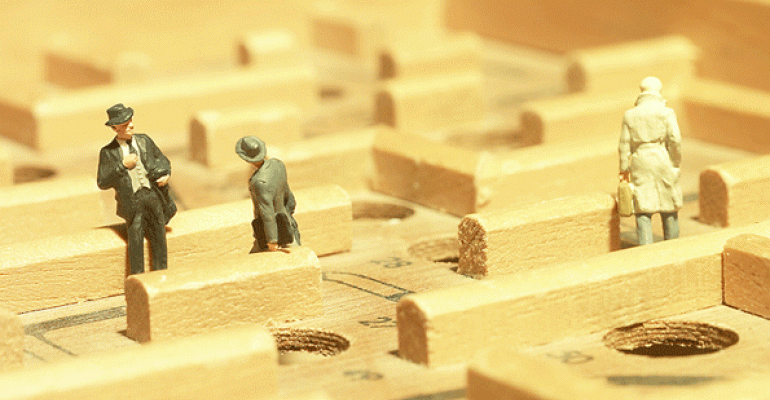 PCMA’s Convening Leaders, which is going on right now in Orlando without me (sob!), still isn’t totally out of my reach thanks to the organization’s willingness to open up some of its sessions to a virtual audience. So I carved out some time today to sit in on a couple of sessions, notably one this morning on gamification led by Kurt Nelson, president and founder of The Lantern Group, and Bob Vaez, president of EventMobi.
PCMA’s Convening Leaders, which is going on right now in Orlando without me (sob!), still isn’t totally out of my reach thanks to the organization’s willingness to open up some of its sessions to a virtual audience. So I carved out some time today to sit in on a couple of sessions, notably one this morning on gamification led by Kurt Nelson, president and founder of The Lantern Group, and Bob Vaez, president of EventMobi.
I’ve only participated in a few conference games, and while some were more successful than others, each time they grabbed my attention like I was a starving lion and the game was raw meat. Nice to know that it’s just my brain doing what it has to do, which is lighting up in the pre-frontal cortex and flooding with lots of lovely dopamine, a neurotransmitter that serves as serious happy juice for the brain.
Those four core game elements—meeting challenges, taking action, earning prizes, and tracking our standing against the rest of the group’s—just make our brains feel good. That’s why pretty much every big manufacturer is now incorporating some aspect of gaming into their product campaigns, he said. “Because it works. It gets people involved.” Fortunately, brains that feel good in a gaming way also are most susceptible to learning, according to Nelson.
So, say you want to incorporate a game into your next event. What should you do?
Here are Nelson’s five ways to make sure your gamification efforts will be successful
1. Make sure the content is really, really good. “You can have the best system in the world, but if the questions are irrelevant or if it’s too hard to play, people won’t play,” he said. Think through everything that goes into it the game, including why you’re asking the questions you’re asking if it’s an educational game. If the goal is to get people to network more, what do you want people to accomplish through the networking? Be sure to have goals for the game—the more measurable and specific the goals are, the more people will commit to them.
2. While the prize doesn’t have to be a car or an iPad, it should be meaningful, and preferably something they can’t get for themselves. Instead of a $5 Starbucks gift certificate, think about dinner with the organization’s leadership, or free registration for next year’s conference.
3. Build excitement by letting them see others participate. Get people to interact—they will get more engaged and excited by watching others who are engaged and excited. Nelson said that he always sees in his teambuilding events that, even if everyone else starts out with crossed arms and leaning back from the table, all it takes is one person leaning forward to get others to start to lean into the program, too. Display the leaderboard in a public area so people can check their progress against others, he advised. If it’s a large conference, try to find ways to let people play against people they know, similar to the geo-locating game Foursquare, which lets people build their own list of “friends” to play against. If they don’t know the top leaders on the score board, they won’t be as motivated to keep playing.
4. Promote and educate attendees about the game pre-event. Tell them what the game is, where they can download it, and how to play it. One way to build excitement is to specifically invite your organization’s key influencers to download it and spread the word.
5. Keep it simple. While it might be tempting to throw everything you can think of into the game, don’t do it. While attendees likely will keep playing once they start—humans groove on achieving goals, especially when doing so helps us bond, earn prizes and recognition, overcome challenges—if it looks too hard, they may not start.
And now for something completely different, Vaez gave us five things you can do to ensure your game will be a flop:
1. Don’t have buy-in and internal resources dedicated to the game. He talked about a recent conference where one of the company’s VPs was the game’s champion, to the point of dressing up as a Boy Scout complete with the game’s badges all over his shirt.
2. Make it a never-ending game. If they don’t know when to start and finish, they miss out on everything else at the conference. You have to set a goal that is achievable, and give people actions to take to get there, and a deadline to do it by.
3. Too many games. Just because your first game worked, don’t just keep replicating it. You have to look at what made it successful, then build on it for the next game. Otherwise, be assured it will get old really fast.
4. Lots of distraction and poor communication about how to play. Don’t let it be something people can play on their own on their phones while ignoring what’s happening around them. Make sure both online and on-site components are integral to the game.
5. No connectivity on site. Work with your hotel or convention center to make sure you have the bandwidth you need to pull off your game. If you don’t, don’t do it.
At the end they played a quick little five-challenge game that sucked me right in. Amazing how this stuff works. I’m tempted to start playing PCMA’s conference game, but I better not or I’ll never get my work done around here.



